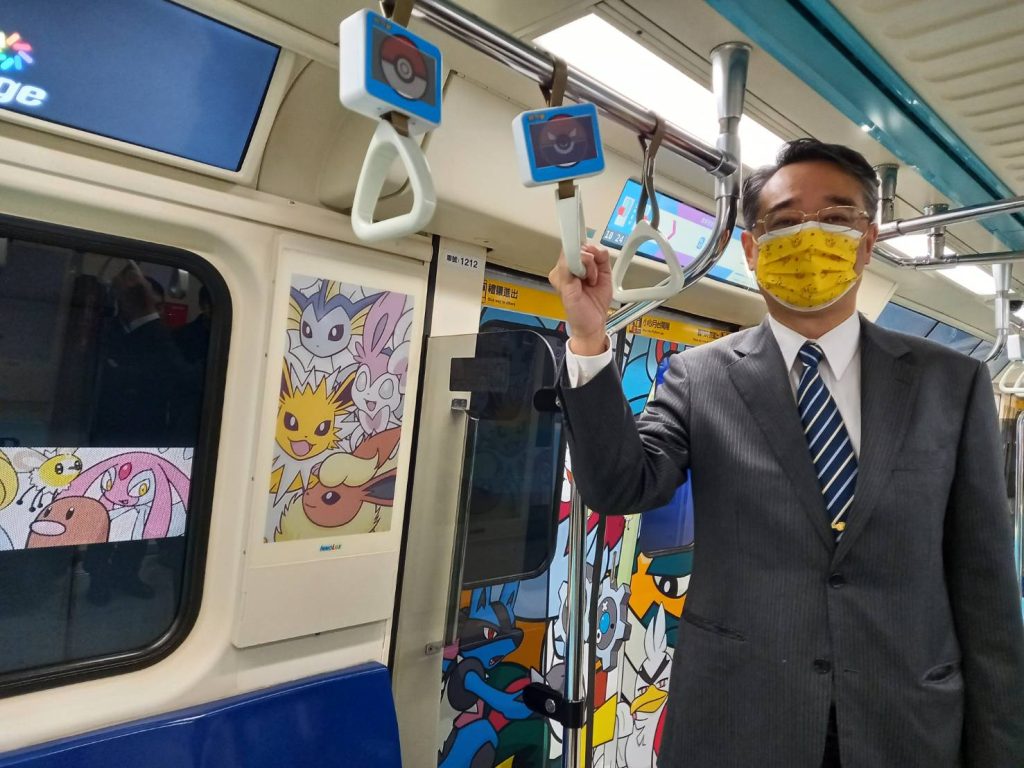
E Ink’s Newest Color Displays Boost Color And Contrast; Intended As Print Poster Replacements
March 24, 2022 by Dave Haynes
E Ink continues to evolve the capabilities of its color e-paper – with a new version of its larger format displays substantially boosting both its color and contrast metrics.
The latest generation of the Taiwan company’s Advanced Color ePaper (ACeP) platform, called E Ink Gallery Plus, has a color gamut “ideally reaching” 60,000, and a contrast ratio bumped up by 40%.
The color displays are aimed at indoor commercial digital signage applications for retail, restaurants, transportation and public information displays. There are 28-inch and 25.3-inch displays being used as paper poster replacements on the Smart Display Metro Digital Train, what appears to be a demonstration project on Taipei’s terrific subway system.
You can see in the main image above that the regular version of the menu looks a little washed out, while the Plus version has a richer, more saturated looked for the same image.
Says E Ink:
E Ink Gallery Plus is using E Ink ACeP, a full color electronic ink system with four color pigments: cyan, magenta, yellow, and white, used to achieve a full color gamut at each pixel. The contrast ratio is improved by 40%, from 10 to 14, providing a more impactful visual experience. The look and feel of the new generation is similar to color prints, with the benefit of digital changes that allow for instant updates to match with promotion and communication needs. E Ink Gallery Plus will be available in various sizes for customers, including 13.3-inch, 25.3-inch, and 28-inch.
“E Ink has been investing considerable R&D resources in ePaper film and modules, as well as in color drivers, hardware and software, enabling continuous refinement and innovative breakthroughs in ePaper technology,” says the CEO of E Ink, Johnson Lee. “The new generation of E Ink Gallery Plus significantly improves the contrast ratio of our full color ePaper, and can help customers’ make their advertisements more eye-catching.”
E Ink will cooperate with ecosystem partners to jointly introduce E Ink Gallery Plus into the digital signage market. The goal is to replace single-use printed posters in commercial advertising and public information displays and reduce the impact on the environment. E Ink Gallery Plus features low-power consumption, can be driven from solar power and is eye-friendly, attributes that are beneficial in the development of sustainable smart cities.
The specs for this are a bit over my head. For most commercial displays, color gamut seems to be expressed more as a percentage than a total number. I dunno if 60,000 relates to total colors, or something else. Display nerds will know (and care) more.
This the explanation provided by E Ink, which is even more over my head but may be helpful to serious display nerds:
The gamut in percentages refers to chromaticity areas relative to reference RGB primaries, for example %sRGB or %NTSC. These work for the emissive LCD and OLED screens of TVs, tablets and phones but are useless for reflective color displays like ACeP because they ignore the 3rd color dimension of lightness that is so important for reflective displays. A reflective display that can reflect more light will be capable of showing brighter and more saturated colors, but this advantage will not increase its %sRGB or %NTSC.
Therefore we measure the color capability of reflective displays as Gamut Volume in a 3D color space like CIELAB. The CIELAB color gamut volume can be interpreted as the approximate number of distinguishable colors the display can produce (for example 60,000), but it must not be equated as color quality.
Okey-dokey …

Using these as posters on subway lines (photo above is from that Taipei subway line) would make a lot of sense if the capital cost numbers work out, as making these posters changeable and scheduled would remove the costs of printing, shipping and installation. One poster position could run multiple marketing campaigns.
One big qualifier/limitation of these displays is video – which is not supported. But there are many, many, many advertising and marketing campaigns that will never need (or want to budget for) full motion creative … like mass transit posters and menus.
No idea on cost. Guessing at least as much as commercial displays of the same dimension, and probably more.



Leave a comment